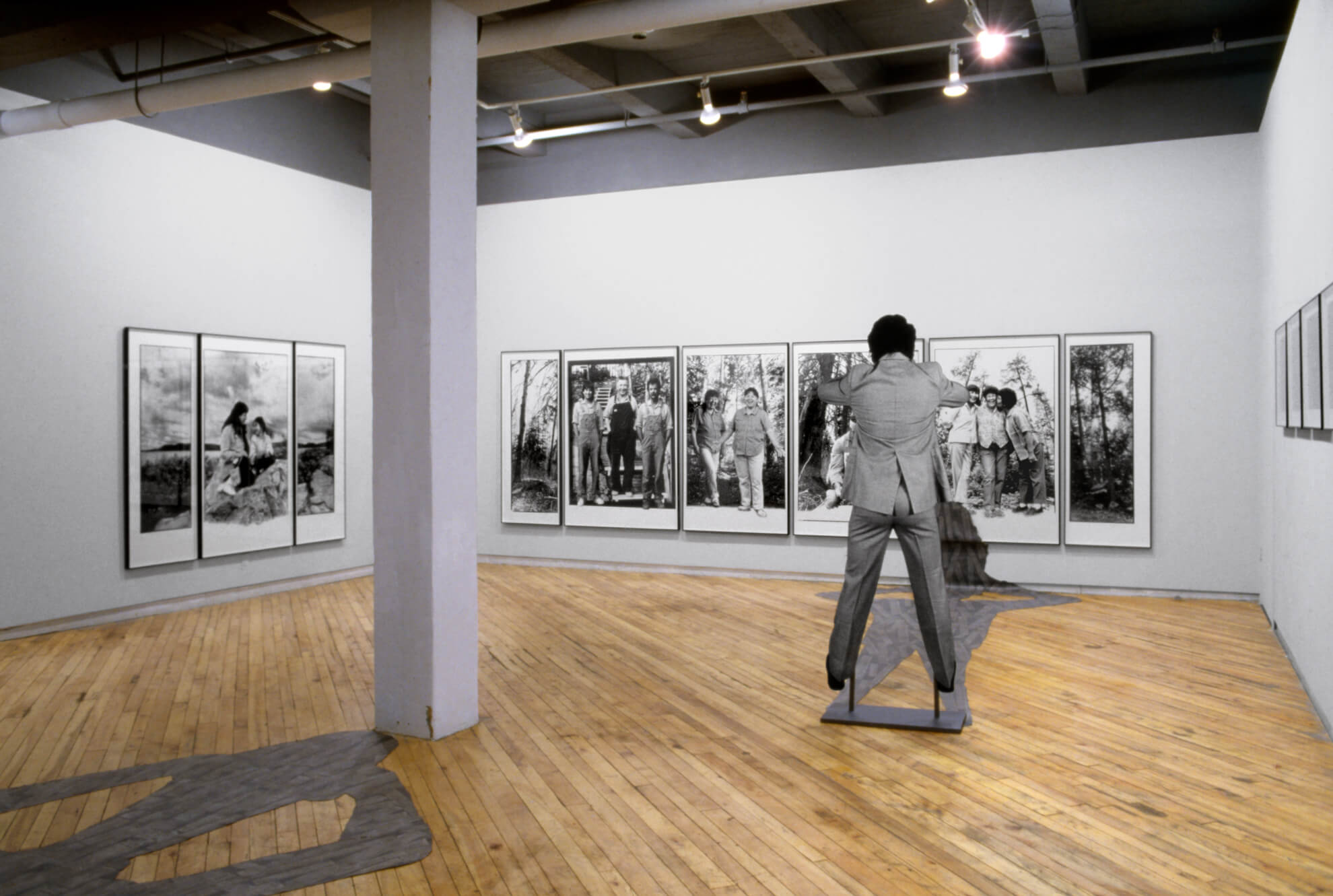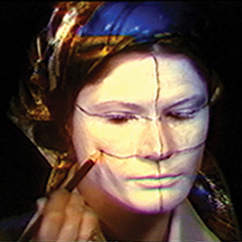Authority Is an Attribute … part 2 1991

Suzy Lake, Authority Is an Attribute … part 2, 1991
Gelatin prints; triptych photomontages and photo sequences; cut-outs on foam core, with newspaper collaged onto canvas, glue, acrylic paint, white grease pencil, and gel medium
Installation at Gallery TPW, Toronto, 1992
In Authority Is an Attribute … part 2, Lake created an installation with three components representing the stakeholders in a land-claim dispute between the Teme-Augama Anishnabai of Bear Island and the Ontario government. The first component consists of life-sized mounted photographs of seven men and women holding binoculars—the authority figures who represent the title Authority Is an Attribute of Power Relations. For this section, Lake also produced fifteen-foot silhouette cut-outs on the floor that extended the cut-out figures into the gallery, giving viewers a sense of the relationships among the people and, because of the binoculars, the uncomfortable feeling of being scrutinized and constantly surveyed. The other two sections consisted of The Game Players, which depicted two men in suits playing chess on the edge of a forested area; and Cautioned Homes and Gardens, portraits of Teme-Augama Anishnabai Band members, with the individuals photomontaged in front of locations within the contested land that held personal significance.

This work, the second part of a two-part project entitled Authority Is an Attribute, marks Lake’s abandonment of her exploration of identity and the self and the beginning of her decade-long focus on combining art and social activism in Canada and abroad. In the first part of the project, Lake had intended to explore power dynamics and authority relationships, but she felt that it “failed … to scrutinize the complexities and complicities of this theme beyond the expressive, ‘knee-jerk’ polarities of victim and exploiter.” For the second iteration, she collaborated with the Teme-Augama Anishnabai of Bear Island in Temagami, located in the Nipissing District of Northeastern Ontario. They asked her to create a visual element for their struggle over their land claim.
The Temagami land caution, which had been in place since 1973 and permitted the Indigenous Band to protect 10,000 square kilometres of land, was threatened by the approval for an expansion of Red Squirrel Road into their territory. In response, the Teme-Augama Anishnabai erected a series of roadblocks. This particular event was just part of a larger conflict between the Band and the Ontario government after the Ontario Court of Appeal refused to consider their land claim, finding that the Teme-Augama Anishnabai had been signatories on earlier treaties. Lake, who had camped near Lake Temagami and met members of the Band, agreed to use her artistic strategies to draw attention to the dispute and to provide a visual forum in which the Teme-Augama Anishnabai could be represented and have a voice.
Lake notes that at the time the installation was first exhibited, in the early 1990s, this type of collaboration, which provided a visual forum for political struggle, was uncommon. Throughout the 1970s she had explored elements of power and power dynamics abstractly by using her own body in her photographic series—as in ImPositions #1, 1977. Here she used similar techniques to inquire into the real-life conditions of the Teme-Augama Anishnabai and the political urgency of their land claim. Reflecting on the project and its intentions later, in 1998, Lake wrote, “As the artist, I was to provide a context for the audience to recognize the impact of the dynamic, to remind them what that dynamic ‘feels’ like.” In this way she extended her conceptual preoccupations around power and authority into a more didactic call to attention around land, place, and Indigenous resistance.

 About the Author
About the Author
 More Online Art Books
More Online Art Books
 Acknowledgements
Acknowledgements